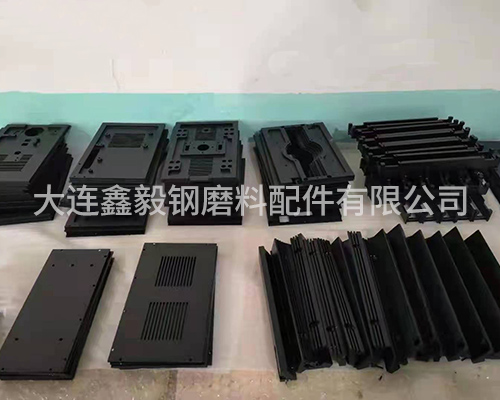Welcome to the official website of Dalian Xinyi steel abrasive parts Co., Ltd!
Dalian Xinyi steel abrasive parts Co., Ltd
Contact: Manager Zhang
Telephone: 0411-39630390
0411-39569620
mobile phone:13795133932
website:en.dlxyg.com.cn
Address: No. 10, Shengsheng Second Road, Dalian Economic and Technological Development Zone
Office worker: Quanshui P3, Ganjingzi District, Dalian
Dalian blackening surface treatment technology also includes surface modification of metals, also known as surface optimization, which uses new technologies such as ion beam, laser, and plasma to change the composition, structure, and properties of the material surface and near surface, in order to obtain new thin layer materials that cannot be obtained using traditional metallurgy and surface treatment technologies, or to make traditional materials have better performance.
There are two commonly used types of phosphating for fasteners, zinc based phosphating and manganese based phosphating. Zinc based phosphating has better lubrication performance than manganese based phosphating, and manganese based phosphating has better corrosion resistance and wear resistance than zinc plating. It can be used at temperatures ranging from 225 to 400 degrees Fahrenheit (107-204 ℃). Especially for the connection of some important components. For example, connecting rod bolts and nuts of the engine, cylinder head, main bearings, flywheel bolts, wheel bolts and nuts, etc.
Common methods for surface treatment of metals in Dalian
Increasing surface crystal defects (obtaining a dense surface or increasing dislocations for better adhesion);
Obtain the surface layer of compressive stress state (such as shot blasting, sandblasting, etc.);
The surface forms a hardened structure (such as martensite);
Surface grain refinement or microcrystallization;
Some chemical treatments can also be classified as surface structure strengthening methods (such as acid, alkali treatment, hydrogen peroxide treatment, and electrochemical grain boundary corrosion).
The method of chemically treating metals in a phosphate solution containing manganese, iron, and zinc to form a phosphate protective film on the metal surface that is difficult to dissolve in water is called metal phosphate treatment. The phosphating film layer has a microporous structure, firmly bonded to the substrate, and has good adsorption, lubrication, corrosion resistance, non adhesion to molten metals (Sn, Al, Zn), and high electrical insulation.
A basic principle is that phosphating is relatively cheaper than galvanizing, but its corrosion resistance is worse than galvanizing. After phosphating, oil should be applied, and its corrosion resistance is closely related to the performance of the oil applied. For example, after phosphating, applying a general anti rust oil and conducting a neutral salt spray test for only 10-20 hours. Applying high-grade anti rust oil can take up to 72-96 hours. But its price is 2-3 times that of general phosphating oil.

![]()
Office address: P3 Quanshui District, Ganjingzi District, Dalian
Factory address: No. 10, Shengsheng Second Road, Dalian Economic and Technological Development Zone
Copyright © http://en.dlxyg.com.cn/ 大连鑫毅钢磨料配件有限公司 Specializing inDalian sandblasting,Dalian shot blasting,Dalian blackened surface treatment,Welcome to inquire!
辽ICP备18004327号 Powered by Clouds platform Technical Support:Joint enterprise Era
 | Wechat scan Pay attention to our timely information |